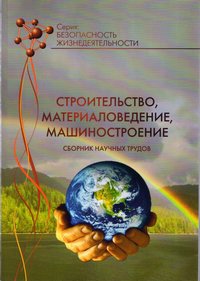Safe exploitation of biogas equipment on Ukrainian enterprises
DOI:
https://doi.org/10.30838/P.CMM.2415.250918.222.156Keywords:
biogas options, safe exploitation, risk zones, dangerous productive factors, European program BioGasAtexAbstract
Purpose. The aim of work is an analysis of typical accidents and accidents on the biogas options of European countries, modern facilities of safety and study of the high-efficiency program BioGasAtex for introduction on the enterprises of Ukraine. Methodology. Study and analysis of world experience on safe exploitation of biogas options in the European countries. Findings.It is set that to the basic accidents with explosions the accidents related to storage of biogas belong on biogas enterprises , transporting of biogas and with the receipt of biogas in a process for anaerobic fermentation. The zones of risks on bioenergetic options (Zone 0, Zone 1, Zone 2) and their location are set. The basic methods of decline of risk are shown: non-admission of appearance of source of spunking and prevention of sources of methane and creation of explosive environment. Studied program BioGasAtex, by means of that it maybe to identify all critical processes that can be risky and to increase probability of origin of explosive atm osphere and development of explosion. The program created in Microsoft Excel with the use of properties of spreadsheet and connection of their operations by means of the programs created in language of Visual Basic. It can execute difficult operations. Originality. The analysis of safe exploitation of biogas options of European countries allows to apply rich experience of their safe exploitation on the enterprises of Ukraine. Practical value. Introduction of modern methods of accident-free work and high-efficiency program BioGasAtex on the biopower objects of Ukraine will help to work out the problems related to prevention of explosion at the production of biogas.
References
Garmash S.N. (2013). Anaerobnaya biokonversiya organicheskix otxodov v biogaz [Anaerobic bioconversion of organic waste into biogas] in Questions of chemistry and chemical technology, Dnipro, no. 5, pp. 35-38.
. GOST 12.1.004-91. Mezhgosudarstvennyj standart. sistema standartov bezopasnosti truda. pozharnaya bezopasnost. obshhie trebovaniya [Interstate standard. Occupational safety standards system. Fire safety. General requirements].
GOST 53790–2010 Energetika biootxodov. obshhie texnicheskie trebovaniya k biogazovym ustanovkam [Energy waste. General technical requirements for biogas plants], Moscow, 2011, 16 s.
Rozvitok ta komercіalіzacіya bіoenergetichnix texnologіj u munіcipalnomu sektorі v ukraїnі. vikoristannya bіomasi u munіcipalnomu sektorі. praktichnij posіbnik [Development and commercialization of bioenergy technologies in the municipal sector in Ukraine. Use of biomass in the municipal sector. Practical guide], Kiїv, 2016, 168 s.
Eder B., Shulc X. (2011). Biogazovye ustanovki. prakticheskoe posobie [Biogas plants. Practical guide], 170 p.
. BiogasAgriAtex, New Methods of Risk Assessment Explosion on Biogas Plants in Applied Mathematical Sciences, 2014, issue 132, vol. 8, pp. 6599-6619.
OHSAS 18001:2007. Mіzhnarodnij standart sistemi menedzhmentu gіgієni і bezpeki pracі [Occupational health and safety management systems – requirements].
Downloads
Published
Issue
Section
License
Редакція Видання категорично засуджує прояви плагіату в статтях та вживає всіх можливих заходів для його недопущення. Плагіат розглядається як форма порушення авторських прав і наукової етики.
При виявлені у статті більш ніж 25% запозиченого тексту без відповідних посилань та використання лапок, стаття кваліфікується як така, що містить плагіат. У цьому випадку стаття більше не розглядається редакцією, а автор отримує перше попередження.
Автори, в статтях яких повторно виявлено плагіат, не зможуть публікуватися в усіх журналах Видавництва ДВНЗ «Придніпровська державна академія будівництва та архітектури».
Автори, які публікуються у цьому журналі, погоджуються з наступними умовами:
- Автори залишають за собою право на авторство своєї роботи та передають журналу право першої публікації цієї роботи на умовах ліцензії Creative Commons Attribution License, котра дозволяє іншим особам вільно розповсюджувати опубліковану роботу з обов'язковим посиланням на авторів оригінальної роботи та першу публікацію роботи у цьому журналі.
- Автори мають право укладати самостійні додаткові угоди щодо неексклюзивного розповсюдження роботи у тому вигляді, в якому вона була опублікована цим журналом (наприклад, розміщувати роботу в електронному сховищі установи або публікувати у складі монографії), за умови збереження посилання на першу публікацію роботи у цьому журналі.
- Політика журналу дозволяє і заохочує розміщення авторами в мережі Інтернет (наприклад, у сховищах установ або на особистих веб-сайтах) рукопису роботи, як до подання цього рукопису до редакції, так і під час його редакційного опрацювання, оскільки це сприяє виникненню продуктивної наукової дискусії та позитивно позначається на оперативності та динаміці цитування опублікованої роботи (див. The Effect of Open Access).

